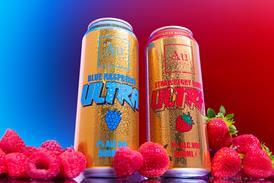- Home
- Retail & Wholesale
-
Products & Suppliers
- Back to parent navigation item
- Products & Suppliers
-
Product Categories:
- Back to parent navigation item
- Product Categories:
- Alcoholic drinks
- Bakery
- Cereals & breakfast
- Cheese
- Chicken & poultry
- Chocolate
- Confectionery
- Crisps, nuts & snacks
- Dairy
- Fish
- Fresh produce
- Frozen
- Household
- Meat
- Own Label
- Sauces & condiments
- Seasonal
- Soft drinks
- Vaping
- Vegan & plant-based
- World foods
- Suppliers
- People
- Reports & Data
-
Topics A-Z
- Back to parent navigation item
- Topics A-Z
-
Popular topics:
- Back to parent navigation item
- Popular topics:
- Cost of living crisis
- Crime
- Deposit Return Schemes
- Finance
- Government & Regulation
- Health
- Inflation
- Loyalty
- Marketing
- Mergers & Acquisitions
- New Product Development
- Sourcing
- Supply chain
- Sustainability & environment
- Technology
- Ultra Processed Foods
- Vaping
- A-Z all topics
- Content by type:
- Events
- Ask iA (beta)
- Subscribe now
How brands create new Christmas foods every year
By Dene Mullen2025-05-30T15:09:00

While Brits enjoy the sun, food and drink brands are well into making their lists for what they’ll be putting out at Christmas time. How does the process work?
While Brits enjoy the sun, food and drink brands are well into making their lists for what they’ll be putting out at Christmas time. How does the process work?
For most Brits, the next few months are likely to include some or all of the following: a week or two away; as many barbecues as humanly possible; plentiful pub garden visits; summer strolls galore; perhaps even a music festival. For the hardy souls at beloved brands such as Cadbury, Mr Kipling and Dr Oetker, however, this summer will be dominated by one thing: planning for Christmas 2026.
Already have an account? Sign in here
Already have an account? Sign in here





